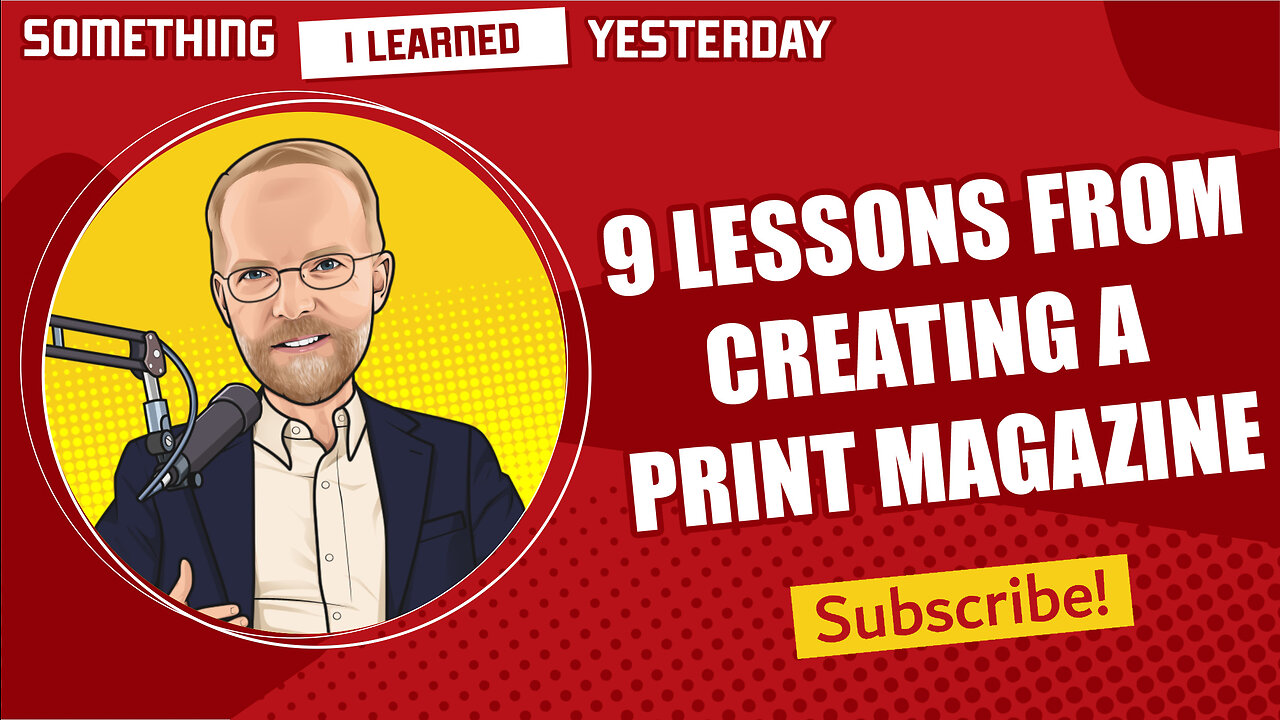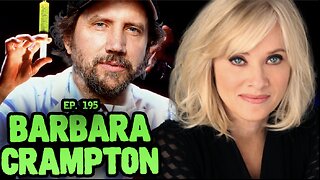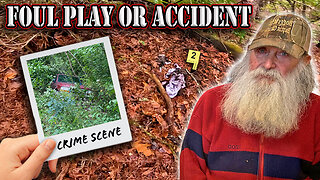Premium Only Content

Peter Houston's 9 lessons from creating an indie print magazine
Print is far from dead, and these nine lessons are worth your consideration
Today I will review and comment on Peter Houston’s article, “Nine things we learned making an indie print magazine,” which I received from Bo Sacks last week.
Know your motivations
Don’t go into it for the money, he says, but if laughs and learning are a priority, proceed.
The Grub Street Journal is a B2B magazine for people who make magazines. Peter also wanted to make it a magazine he enjoys reading.
Print media seem to be falling into the “laid back” niche. Print is a luxury item that isn’t just about information. It’s an experience.
Print is different — really different
In a magazine, you have to think about what’s adjacent to what, and how the content flows. It matters whether the article is a left or a right page. You choose what goes in the center, or in the back. Digital doesn’t have the same sorts of issues.
Magazines are manufacturing
You have to work with printers, mail shops, distribution channels, and shops. Selling a physical product is very different than selling a digital one.
Covers still matter
A magazine sits on the newsstand and beckons you to pick it up. It sits on your coffee table as a display, that you want your guests to see. Or it’s what people see when they look at you on the train and you’re reading.
The cover says a lot about a magazine.
B2B doesn’t have to be boring
The craft and economics of a magazine are both well-worn topics — although there are always new people coming into old fields, and times change. Still, Peter wants to have a fresh, interesting, and lively approach that’s “brutally honest, but eternally optimistic.” And fun to read — because people are still people, even at work, and even in their professional lives.
Selling magazines is really hard
As an indie startup, they can’t rely on other people to take care of distribution and retail. They have to get their copies to market, and they have to get people to their Shopify store.
Frack the ‘digital or print’ dichotomy
He’s not talking about print vs. digital issues, but print vs. digital economies. Even if a magazine is in print, you need social media, online commerce, and other ways to connect with audiences. Print still needs digital.
Community is everything
Peter says, “Your friends are everything in this game.” He points to the “1,000 True Fans” dictum (which I’d never heard of), and the importance of being “famous to the family.” Both are crucial when you’re targeting a tightly defined group of readers.
You can’t do everything
Perfect is the enemy of done. You need to get comfortable with something that’s good enough.
I’ll add one comment of my own to all this, which Peter doesn’t address, although we’ve discussed it briefly on LinkedIn.
It can be dangerous to think of print and digital editions of the same publication because print and digital are so different.
Think of “the publication” in the abstract – irrespective of format. There are two approaches from there.
In the first – this is the dangerous one – you limit your concept of the publication to what will work in both print and digital. Imagine two intersecting circles, where the circle on the left is “what print does well” and the circle on the right is “what digital does well.” You’ve limited yourself to the area of intersection.
In the second approach, you take the general publication idea and ask “how can I make this the best possible publication in print,” and the same for digital. You might end up with two very different products. But that’s okay.
Resources
Nine things we learned making an indie print magazine
https://voices.media/grub-street-journal/
-
 8:40
8:40
Tundra Tactical
16 hours ago $0.03 earnedThe Executive Order Wishlist.
564 -
 7:22:52
7:22:52
SpartakusLIVE
15 hours agoSaturday SPARTOON Solos to Start || Duos w/ StevieT Later
90.2K2 -
 28:40
28:40
SLS - Street League Skateboarding
8 days agoTOP MOMENTS IN WOMEN’S SLS HISTORY! ALL THE 9’s - Rayssa Leal, Leticia Bufoni, Chloe Covell & more…
45K11 -
 2:03:03
2:03:03
The Connect: With Johnny Mitchell
13 hours ago $0.56 earnedHow Mexican & Chinese Cartels Control Illegal Marijuana Cultivation In America Using SLAVE Labor
2.67K1 -
 14:46
14:46
Mrgunsngear
14 hours ago $0.63 earnedPrimary Arms GLx 1x Prism With ACSS Reticle Review
3.12K5 -
 22:37
22:37
Degenerate Plays
14 hours agoI'm A Psychic Now - Elden Ring : Part 73
107 -
 2:32:02
2:32:02
Jamie Kennedy
7 hours agoEp. 195 Horror Legend Barbara Crampton
89 -
 23:00
23:00
Exploring With Nug
1 day ago $32.38 earnedHis Truck Was Found Crashed in the Woods… But He’s Gone!
130K8 -
 27:09
27:09
MYLUNCHBREAK CHANNEL PAGE
1 day agoDilmun: Where Life Never Ends
96.7K56 -
 2:58:32
2:58:32
Slightly Offensive
18 hours ago $100.63 earnedHas Trump FAILED US? The ABSOLUTE STATE of The Right Wing | Guest: Nick Fuentes
145K199